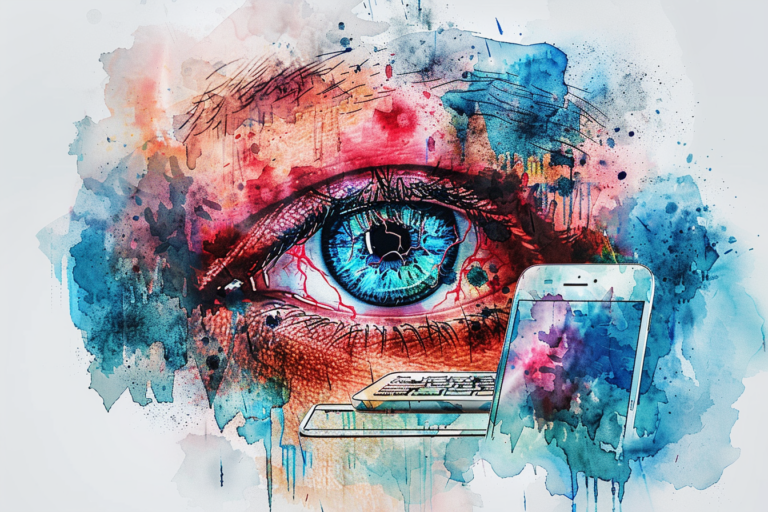
In today’s digital age, we spend an increasing amount of time in front of screens — be it computers, smartphones, tablets, or televisions. While these devices have revolutionized how we work and communicate, excessive screen time can have significant negative effects on our eye health and mental well-being. Understanding these impacts is crucial for maintaining both our vision and mental health.
One of the most immediate effects of prolonged screen time is digital eye strain (DES), also known as computer vision syndrome. Symptoms include:
•Eye discomfort and fatigue: Persistent staring at screens reduces the frequency of blinking, leading to dry eyes and irritation.
•Blurry vision and difficulty focusing: Continuous focus on screens can cause difficulties in maintaining clear vision and switching focus between near and far objects.
•Headaches: Eye strain can result in tension headaches, often exacerbated by poor posture and screen glare.
Excessive use of digital devices can lead to dry eye syndrome. This occurs when there is insufficient lubrication on the surface of the eye, causing discomfort, redness, and even vision problems. Contributing factors include:
•Reduced blinking: Normally, we blink around 15-20 times per minute, but this rate decreases significantly when using screens.
•Environmental conditions: Air conditioning and heating can exacerbate dry eye symptoms, common in office environments where digital device use is high.
The physical discomfort caused by digital eye strain can contribute to higher levels of stress and anxiety. The constant need to focus, combined with eye discomfort, can make work and daily tasks more challenging, leading to increased mental fatigue and stress.
Chronic discomfort from eye strain can impact overall mood and mental state. Persistent pain and the inability to complete tasks comfortably can lead to feelings of frustration and helplessness, potentially triggering depression.
Blue light emitted by screens can interfere with sleep patterns by suppressing the production of melatonin, the hormone that regulates sleep. Poor sleep quality can further exacerbate mental health issues, leading to a vicious cycle of eye strain and mental fatigue.
To reduce digital eye strain, follow the 20-20-20 rule: every 20 minutes, take a 20-second break to look at something 20 feet away. This practice helps relax the eye muscles and reduce fatigue.
Minimize screen glare by adjusting room lighting. Use softer, indirect lighting and avoid sitting with your back to a bright window. Consider using screen filters to reduce glare.
Lubricating eye drops can help maintain moisture on the surface of your eyes, especially in dry environments.
Position your screen about an arm’s length away and at eye level to reduce strain on your eyes and neck. Ensure that your seating position supports good posture.
Where possible, reduce non-essential screen time. Engage in activities that do not involve screens, such as reading physical books, outdoor activities, or hobbies that give your eyes a break.
While digital devices are integral to modern life, it is important to be aware of the potential negative impacts of excessive screen time on both eye health and mental well-being. By implementing simple strategies to reduce digital eye strain and taking care of your overall health, you can maintain better vision and a healthier state of mind. Balancing screen time with other activities is key to preventing the adverse effects associated with prolonged digital device use.